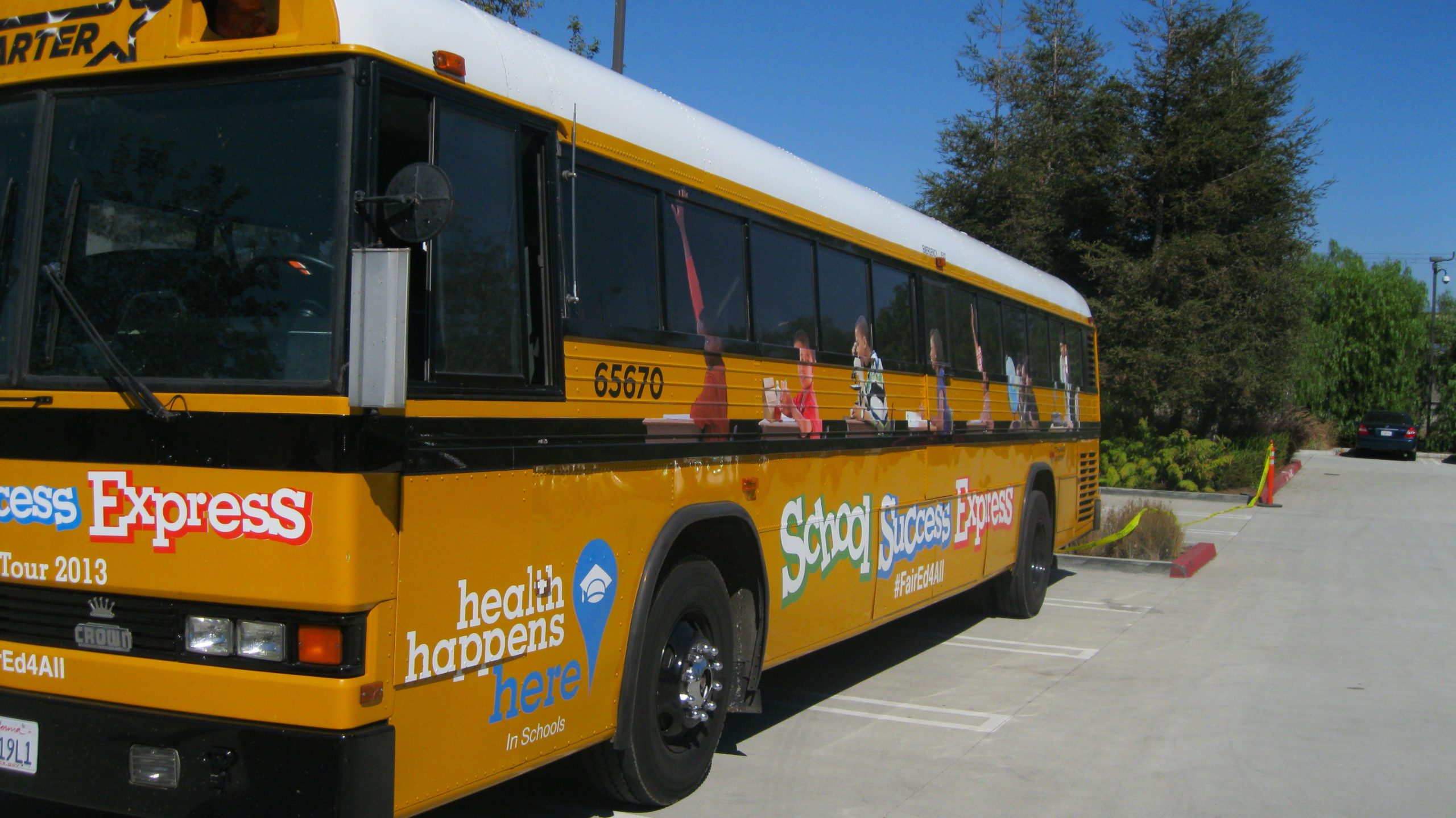
Alina Bokde, executive director of the LA Neighborhood Land Trust, stands in a community garden that’s the result of new thinking about the health aspect of her organization’s work.
Alina Bokde, executive director the Los Angeles Neighborhood Land Trust, wasn’t quite sure how a new push to view her organization’s work through a public health lens would work.
She’s been acquiring open space in urban areas for years, with an eye toward conserving land, providing recreation and helping to mitigate climate change. But having a direct and significant effect human health? That was harder to envision achieving with small plots of land.
But her group had joined with dozens of other nonprofits in a bold effort to finally lift South Los Angeles, a poor neighborhood with familiar urban social ills – crime, poverty, high disease rates – onto a new trajectory that results in longer, healthier lives for residents.
The organization funding this major South LA project, which is called “Building Healthy Communities” and will run tens of millions of dollars over a decade, asked the community’s nonprofits to agree on common goals and best practices to increase the odds of achieving real success. The request of the funder, the California Endowment, reflects an emerging practice in philanthropy called “collective impact.” It asks that the many nonprofits tackling social ills in a community join together more tightly to achieve lasting change.
The nation’s 1.4 million nonprofits typically develop independent approaches to solving major social problems. But they’re “often working at odds with each other and exponentially increasing the … resources required to make meaningful progress,” wrote two authors in the Stanford Social Innovation Review.1
The newly-shared objective around health led to a surprising outcome for the LA Neighborhood Land Trust after it began looking for the human health potential of its work as well.
Armed with this new way of viewing the organization’s work, one of Bokde’s staff approached an LA community health clinic, Clinica Romero, and asked the director – who hadn’t worked before with the land trust – if the clinic would develop a curriculum and nutritional guide for its diabetic patients, using a wished-for community garden at a nearby park to teach these lessons. The clinic director said yes, and Bokde then went to the Kaiser Family Foundation, asking if it would award a $50,000 grant to build the garden and help fund the development of the material to teach the patients more healthful living habits. It also said yes.
In the spring of 2012 the new community garden opened, with 19 raised plots – nine of which are reserved for clinic patients and the rest set aside for the community. The plots were awarded by lottery and there’s a wait list. Gardeners pay $35 a year. The fenced-in area, with a shed and its thickly-growing gardens, is a peaceful oasis off a busy LA thoroughfare. The clinic patients attend classes there, where they learn ways to cook the fresh produce. They also learn the most nutritious ways to shop for food and to cook it.
Bokde is thrilled with the outcome. “I’ve become a convert,” she said. And at no point did she feel the collaboration toward improving community health was forced. “It was very natural.” Her organization is also working with another clinic to build and run a community garden at a South LA high school.
The Los Angeles Neighborhood Land Trust even changed its tagline to “Growing Healthier Communities Through Urban Parks & Gardens.” And the Land Trust Alliance, a national group, asked Bokde to speak at its October 2012 annual conference in Salt Lake City on the intersection between public health and open space acquisition. She got an enthusiastic response and the national group invited her back to speak on the topic this year.

A woman named Imelda leisurely watered her garden plot one evening last summer in a busy LA neighborhood.
At the one-third acre garden site in Los Angeles one August evening last summer, a woman named Imelda was calmly watering the tomatoes, carrots and chilies she grows for her family. (Gardeners with extra can sell at a farm stand at the garden on weekends.)
Her family loves the fresh produce, but she’s also enriched by the experience. Tending her garden “takes a little of the stress away,” Imelda said.
TAKEAWAY: When nonprofits working in the same community set shared overarching outcomes, such as reducing violence, improving health or economic revitalization, they can produce outstanding results.
—
- John Kania and Mark Kramer. “Collective Impact.” Stanford Social Innovation Review, Winter 2011. www.ssireview.org/articles/entry/collective_impact





